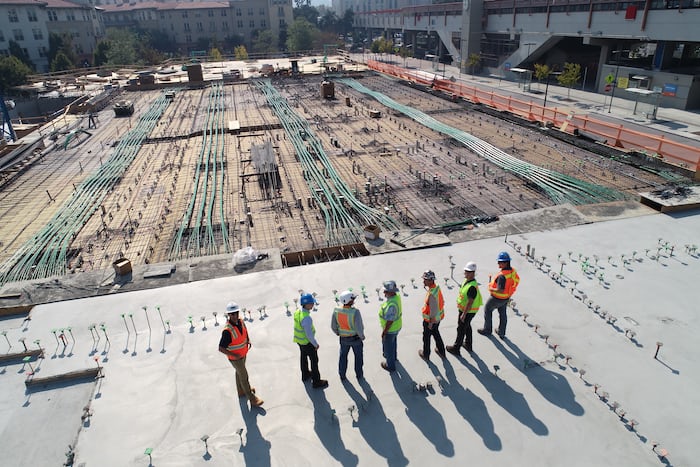Five IoT Applications in Construction Equipment Monitoring

In the rapidly advancing field of construction, IoT applications are becoming increasingly integral. These sophisticated systems, focused on construction equipment monitoring, offer unprecedented opportunities for productivity and efficiency enhancements.
They enable real-time monitoring and management of construction machinery, ensuring optimal performance, reducing downtime, and significantly increasing safety on site.
This article will delve into the world of IoT in construction equipment monitoring, and how fleet management companies like Trackunit are harnessing these cutting-edge technologies that are revolutionizing the industry.
What is IoT?
Let’s first cover a bit of background on the technology itself. The Internet of Things – IoT for short – is a network of devices that are connected and can therefore send and receive data over an Internet connection. For example, smart appliances like thermostats or complex machinery used on construction job sites.
Here are some common features of IoT technology and its devices:
- Interconnectivity: IoT devices are designed to connect to the Internet and other devices to enable data sharing and communication.
- Data collection and transmission: These devices collect data from their environment using built-in sensors. This data is then transmitted over the network for further analysis and action.
- Action: Based on the data received and analyzed, actions are taken either automatically or after human intervention. This could range from adjusting the temperature of a smart thermostat to alerting the necessary personnel about a potential malfunction in construction equipment.
- Continuous learning: IoT devices are capable of learning from the data they collect. This helps produce better accuracy and efficiency over time as the devices adapt to patterns and changes in the environment.
Five IoT applications in construction equipment monitoring
By leveraging these properties, IoT technology plays a pivotal role in numerous sectors, including construction, where it is instrumental in equipment monitoring, enhancing productivity, and ensuring safety.
IoT applications in construction equipment monitoring offer a multitude of benefits that transform the landscape of the construction industry.
- Real-time monitoring
IoT devices allow for the real-time tracking of construction equipment. This means that operators can monitor the performance and status of machinery instantaneously, enabling swift decision-making and action when necessary.
- Predictive maintenance
With the help of IoT technology, equipment managers can identify and address potential issues before they escalate into costly repairs or downtime. This predictive maintenance approach results in longer equipment lifespan and reduced expenses.
- Increased safety
IoT devices are equipped with various sensors, helping them detect hazardous situations or equipment malfunctions, alerting workers and preventing potential accidents. This function enhances safety protocols on the site considerably.
- Resource optimization
By tracking the usage and efficiency of equipment, IoT applications can help construction companies optimize resource allocation, ensuring that all machinery is used to its full potential.
- Data insights
IoT devices collect data that can be analyzed to gain valuable insights. This information can be used to refine strategies, improve operations, and increase overall productivity.
In essence, IoT applications in construction equipment monitoring provide a comprehensive solution for enhanced operational efficiency, cost-effectiveness, and safety compliance, shaping the future of the construction industry.
Conclusion – Five IoT applications in construction equipment monitoring
In conclusion, IoT applications in construction equipment monitoring are not merely a trend but a significant leap toward a more efficient and safe construction industry. By offering real-time monitoring, predictive maintenance, and crucial data insights, these applications play a pivotal role in shaping the industry’s future.
These innovative technologies, intertwined with the construction sector, promise a landscape that is more productive, cost-effective, and safe. Embracing these advancements will undoubtedly set the standard for years to come.



